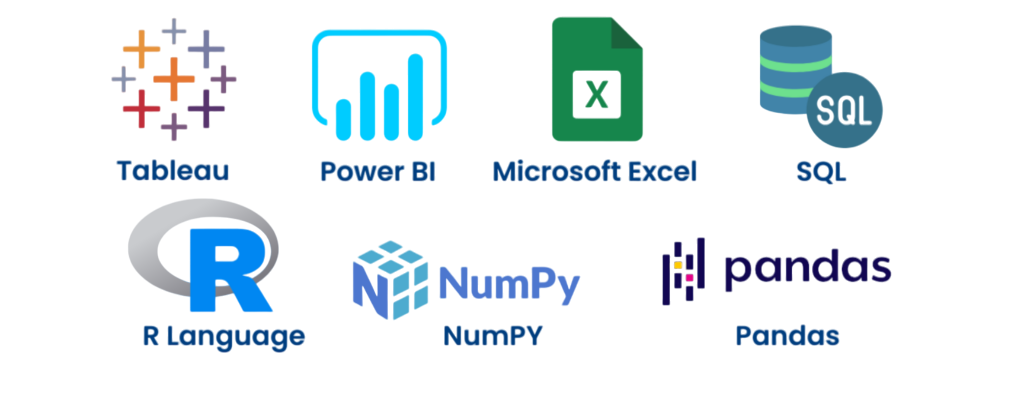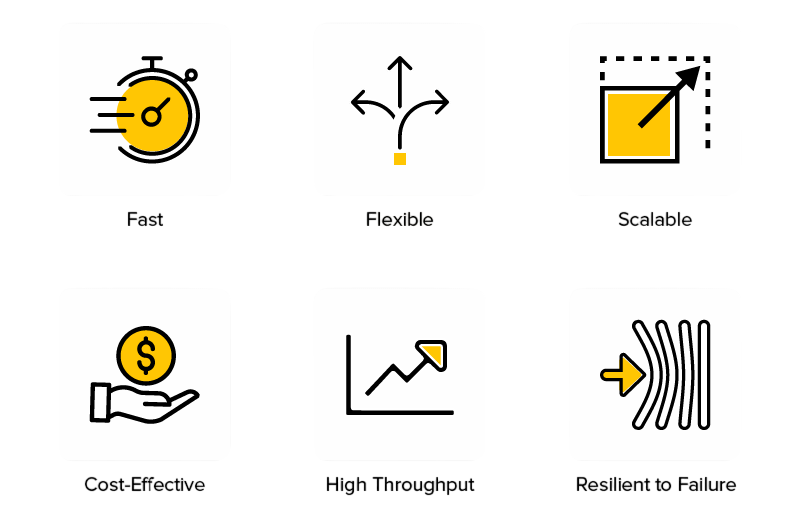
- Overview of Hadoop Training Program
- Basics of Big Data
- Core Hadoop Components
- Hadoop Data Storage Concepts
- Processing Large Datasets
- Integrating Hadoop with Other Tools
- Real-Time Analytics with Hadoop
- Common Challenges in Hadoop
- Hands-On Training Projects
- Final Takeaways
Overview of Hadoop Training Program
Hadoop Online Training is designed to provide a comprehensive understanding of the Hadoop ecosystem and its role in managing and processing big data. With data continuing to grow exponentially across industries, Hadoop has become the backbone for scalable and fault-tolerant data analytics. This training course introduces learners to the fundamentals of big data, the architecture and components of Hadoop, data storage and processing frameworks, and the tools that make up the extended ecosystem. To build a strong foundation in these areas and launch a career in analytics, explore Data Science Training a comprehensive program designed to equip learners with hands-on experience in data engineering, machine learning, and real-world project deployment. The online format provides flexibility for working professionals, students, and tech enthusiasts to build real-world skills through hands-on labs and industry-relevant projects. Whether you’re aiming to become a Data Engineer, Hadoop Developer, or Big Data Analyst, this Hadoop Online Training program helps you understand Hadoop inside and out both theoretically and practically.
Basics of Big Data
Before diving into Hadoop, it’s essential to understand the concept of Big Data massive datasets that are too large, fast, or complex for traditional systems to manage efficiently. Big Data is typically described by the 5 Vs: Volume (size of data), Velocity (speed of generation), Variety (different data types), Veracity (data accuracy), and Value (usefulness). Sources include social media, sensors, web logs, videos, emails, and transactional systems. To see how these dimensions come to life at scale, explore How Facebook is Using Big Data an in-depth article that reveals how Facebook leverages massive datasets to personalize experiences, optimize engagement, and drive platform innovation. Traditional relational databases fall short when handling such diverse and fast-moving data. That’s why frameworks like Hadoop are essential. Big Data enables powerful use cases such as predictive analytics, sentiment analysis, customer personalization, fraud detection, and business intelligence, making it vital for decision-making in the digital age.
Interested in Obtaining Your Data Science Certificate? View The Data Science Online Training Offered By ACTE Right Now!
Core Hadoop Components
The core components of Hadoop form the foundation of its functionality. These include HDFS (Hadoop Distributed File System), YARN (Yet Another Resource Negotiator), and MapReduce. To build expertise in these technologies and understand the prerequisites for mastering them, explore Skills Needed to Learn Hadoop a practical guide that outlines the technical competencies, tools, and learning paths essential for becoming proficient in big data engineering.
- HDFS: Manages data storage by breaking files into blocks and distributing them across cluster nodes with replication for fault tolerance.
- YARN: Handles resource management and job scheduling across the cluster.
- MapReduce: The original programming model used to process data in parallel across nodes using the Map and Reduce phases.
Together, these components enable Hadoop to provide scalable, distributed processing on commodity hardware. The architecture is designed for reliability and efficiency, ensuring that data-intensive jobs can be executed with minimal downtime and maximum throughput.
To Explore Data Science in Depth, Check Out Our Comprehensive Data Science Online Training To Gain Insights From Our Experts!
Hadoop Data Storage Concepts
Data storage is a key aspect of Hadoop’s design, and it revolves around HDFS. Unlike traditional file systems, HDFS is built for high throughput rather than low latency, optimized for storing large files rather than many small ones. Files are split into fixed-size blocks (default is 128MB or 256MB) and replicated across multiple DataNodes to ensure fault tolerance. To understand how this architecture supports scalable analytics and real-time processing, explore Data Science Training a hands-on program that covers distributed storage, data pipelines, and the tools needed to thrive in modern data roles. The NameNode stores metadata about file locations, while the Secondary NameNode periodically saves checkpoints. HDFS provides write-once, read-many functionality, making it ideal for batch processing jobs. The file system is highly scalable adding more nodes automatically increases storage and computing capacity. Hadoop also integrates with other storage systems like Amazon S3 and Azure Blob Storage for hybrid deployments.
Processing Large Datasets
Hadoop excels at parallel data processing, allowing massive datasets to be broken down and handled simultaneously across nodes. The traditional model uses MapReduce, which splits tasks into map and reduce functions, processing data in parallel and combining the results efficiently. However, newer technologies like Apache Spark have evolved to perform faster, in-memory computations. With Hadoop, users can run complex ETL (Extract, Transform, Load) processes, analyze log data, perform aggregations, and generate insights from unstructured sources like videos and sensor data. To master these capabilities and design enterprise-grade data solutions, explore Become a Big Data Hadoop Architect a strategic guide that outlines the skills, tools, and architectural principles needed to lead big data initiatives across industries. Processing large datasets also involves understanding data locality – Hadoop moves computation to where the data resides, reducing network overhead and speeding up execution.
Gain Your Master’s Certification in Data Science Training by Enrolling in Our Data Science Master Program Training Course Now!
Integrating Hadoop with Other Tools
One of Hadoop’s greatest strengths is its extensibility. It integrates with a broad array of tools and technologies to support advanced analytics, machine learning, and real-time processing. To discover the thought leaders shaping this evolving landscape, explore Influencers in Big Data & Analytics a curated list of experts driving innovation, sharing insights, and redefining how data is used across industries.

- Apache Hive: Offers a SQL-like interface to run queries on large datasets without writing Java code.
- Apache Pig: Used for analyzing large data flows with a simpler scripting language.
- Apache Sqoop: Enables import/export between Hadoop and relational databases.
- Apache Flume: Used for ingesting streaming log data from various sources into HDFS.
- Apache HBase: Allows real-time read/write access to large datasets.
- Apache Oozie: Helps automate workflows and job scheduling.
- Apache Spark: Integrates with Hadoop to provide faster, more flexible data processing capabilities, including support for machine learning and graph processing.
These integrations make Hadoop a complete big data solution for modern enterprises.
Are You Preparing for Data Science Jobs? Check Out ACTE’s Data Science Interview Questions and Answers to Boost Your Preparation!
Real-Time Analytics with Hadoop
While Hadoop was originally built for batch processing, the demand for real-time analytics has grown rapidly. Technologies within the Hadoop ecosystem now support low-latency data processing. Apache Spark Streaming and Apache Flink provide near real-time data analytics, processing data as it arrives rather than in batches. These are integrated with message brokers like Apache Kafka, enabling seamless data pipelines that can ingest, process, and act on data in real time. To understand how Hive fits into this ecosystem and simplifies querying large datasets, explore What is Hive a detailed article that explains Hive’s architecture, SQL-like interface, and role in modern big data workflows. For example, e-commerce platforms can track user clicks and browsing behavior in real time, adjusting recommendations and offers dynamically. Social media platforms can monitor trending topics and brand mentions instantly. By adopting these tools, organizations gain a competitive advantage through faster insights, improved customer experience, and timely decision-making.
Common Challenges in Hadoop
Despite its advantages, Hadoop comes with several challenges. To understand the core processing model that powers Hadoop and how it addresses these limitations, explore What Is MapReduce & Why It Is Important a detailed article that explains how MapReduce enables distributed computation, fault tolerance, and scalable data processing across clusters.

- Complexity in setup and management: Deploying and maintaining Hadoop clusters requires deep knowledge of distributed systems.
- Security concerns: Hadoop was not initially designed with robust security, so implementing authentication (Kerberos), authorization (Ranger/Sentry), and encryption needs special attention.
- High learning curve: The variety of tools and programming models can be overwhelming for beginners.
- Performance limitations: HDFS is optimized for large files and sequential reads; small file storage and random reads are less efficient.
- Resource contention: Poorly configured YARN resource settings can lead to underutilization or overutilization of the cluster.
- Evolving ecosystem: With constant updates and emerging alternatives like cloud-native tools, staying up-to-date is a challenge.
Hands-On Training Projects
Practical experience is key to mastering Hadoop. Hands-on projects simulate real-world data challenges and reinforce the concepts taught during training. Examples include:
- Web Log Analysis: Processing large volumes of web server logs to understand user behavior.
- Retail Sales Forecasting: Using MapReduce or Spark to analyze historical sales data and predict trends.
- Customer Churn Prediction: Combining Hadoop with machine learning models to identify at-risk customers.
- Sentiment Analysis: Ingesting and analyzing social media feeds using Flume, Hive, and Pig to determine public sentiment.
- ETL Pipeline Implementation: Building data pipelines using Sqoop, Hive, and Oozie to manage structured and unstructured data.
These projects provide learners with confidence and hands-on skills that are directly transferable to professional roles.
Final Takeaways
Hadoop Online Training remains a cornerstone for anyone looking to master the big data ecosystem. Despite newer technologies emerging, Hadoop continues to serve as a robust foundation for storing, processing, and analyzing large-scale data. Through structured online training, learners can gain a deep understanding of Hadoop’s architecture, tools, and use cases. From mastering HDFS and YARN to integrating Spark and building real-time data pipelines, the training equips professionals with both theoretical knowledge and practical skills. To gain end-to-end expertise in data engineering and analytics, explore Data Science Training a career-focused program that blends hands-on projects with industry-relevant tools to prepare learners for high-impact roles in the data ecosystem. Hands-on projects, certification guidance, and career insights make this Hadoop Online Training program ideal for aspiring data professionals. Whether you’re aiming to shift into the big data space or strengthen your existing analytics role, understanding Hadoop in and out is a step toward a rewarding and future-proof career.


